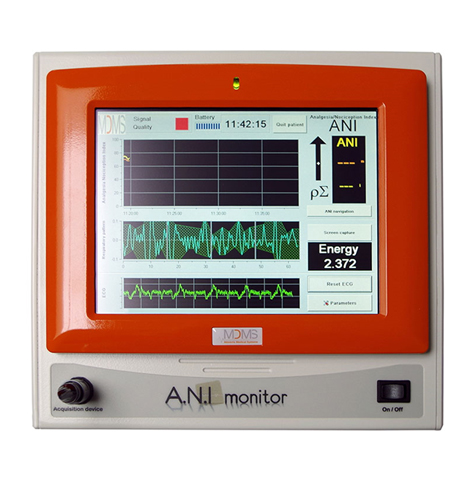Life Care Medical Systems
Call us : +91 22 25651353 | Email : lifecare@lcmsvsnl.com

ANI has been originally developed to predict the occurrence of a hemodynamic response (defined as more than 20% increase of heart rate and/or blood pressure) under general anesthesia. However, our technology also proved her reliability on conscious patients before anesthesia , in intensive care units or in the recovery room. The predictive ability of the ANI has been demonstrated by several international studies that have shown that the ANI is significantly decreased within 5 minutes before the onset of hemodynamic reaction (Boselli et al, Minerva Anestesiol, 2015).
The heart rate regulation by the autonomic nervous system is influenced by respiration. Inspiration temporarily inhibits the influence of the parasympathetic nervous system and produces an acceleration of the heart rate. In contrast, the expiration stimulates the parasympathetic nervous system and induces a slowing of heart rate. These rhythmic oscillations produced by breathing are called respiratory sinus arrhythmia. (cf Parasympathetic loop)
Apart from any external influence, the heart has its own rhythm, very regular, instilled by its natural pacemaker, the sinus node. But the sinus node, located in the right atrial tissue is connected to the autonomic nervous system (ANS) by its sympathetic branch (accelerator process) and the parasympathetic branch (moderator process). It is these ANS actions that induce heart rate modulations. The mathematical analysis of these instantaneous variations gives us a picture of the ANS’ activity.